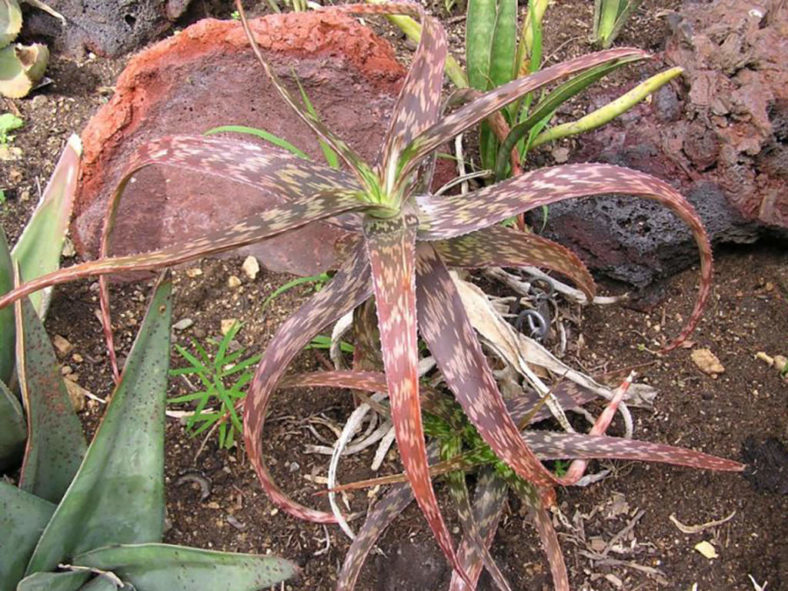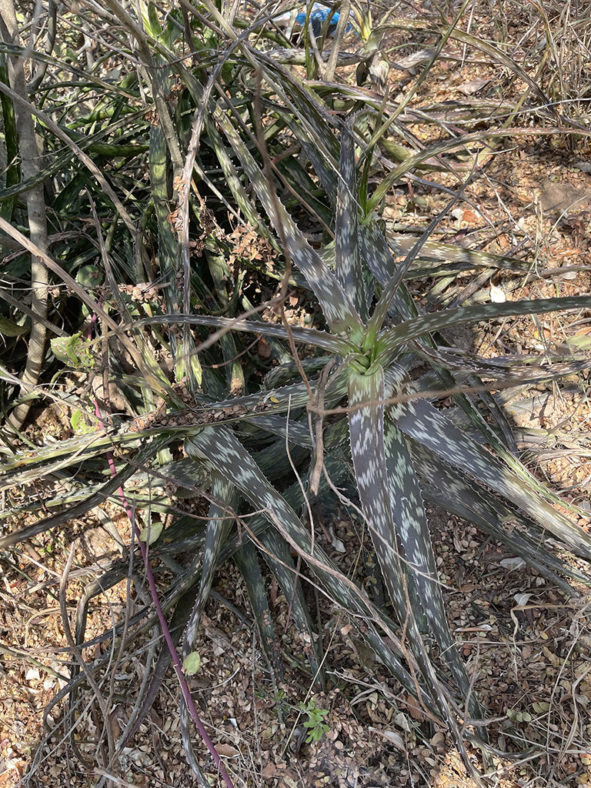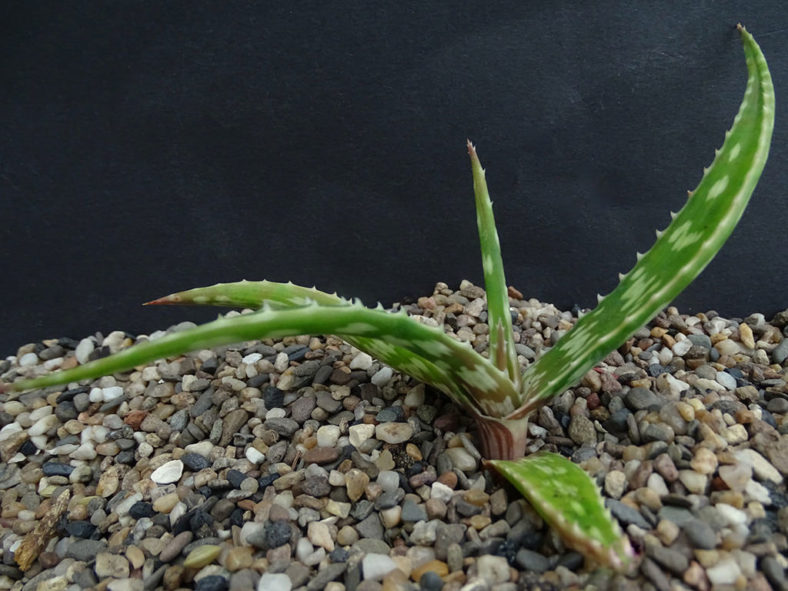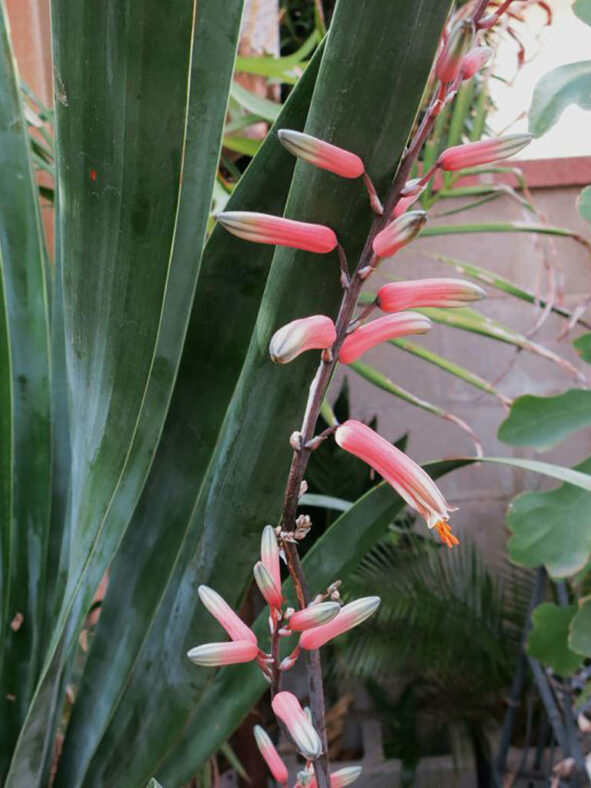Scientific Name
Aloe suffulta Reynolds
Common Name(s)
Climbing-flower Aloe, Sand Aloe
Scientific Classification
Family: Asphodelaceae
Subfamily: Asphodeloideae
Genus: Aloe
Etymology
The specific epithet "suffulta (suf-FUL-ta)" means "propped up; supported" and refers to the inflorescence that is a climbing panicle supported by surrounding vegetation in the natural habitat of the species.
Origin
Aloe suffulta is native to South Africa (KwaZulu-Natal), Mozambique, and Zimbabwe. It grows in sandy soils with loose humus or on black cotton clays but always in the shade of shrubs.
Description
Aloe suffulta is a rarely seen succulent with short stems and dark, glossy green leaves with many elongated, dull white spots and pale cartilaginous deltoid teeth. It usually grows solitary or suckering to form a dense clump over time. The leaves are narrowly deltoid, spreading to recurved, and laxly crowded at the apex of the stems, measuring up to 20 inches (50 cm) long and 1.6 inches (4 cm) wide. They take on an incredible red to reddish-brown color in full sun. The stems are decumbent, with distinct internodes and persistent dried leaves, and can grow up to 8 inches (20 cm) long.
The flowers are salmon-pink, whitish at the mouth, striped greenish longitudinally, and appear in slender, weak inflorescences that can grow up to 6.6 feet (2 m) long in fall. The peduncle is 5- to 9-branched at the uppermost 12 to 20 inches (30 to 50 cm). The racemes are cylindrical, very laxly flowered, and can reach up to 6 inches (15 cm) in length and 2 inches (5 cm) in diameter.

How to Grow and Care for Aloe suffulta
Light: When growing A. suffulta indoors, place your plant in a window with plenty of bright indirect sunlight. Rotate the pot once or twice a week so that all sides of the plant receive equal lighting. Outdoors provide light shade, especially during the hottest parts of the day.
Soil: Plant A. suffulta in a well-drained soil mix specially formulated for succulents or make your own. Drainage is essential because too much moisture around roots can cause root rot.
Temperature: When temperatures shift below 50 °F (10 °C), it is time to bring your plant back inside. A. suffulta can withstand temperatures as low as 30 °F (-1.1 °C). USDA Plant Hardiness Zones 10a to 11b, 30 to 50 °F (-1.1 to 10 °C).
Watering: This succulent does need regular watering but is very tolerant of drought conditions for short periods. Water deeply, but only when the soil is dry. Cut back on watering during the winter months. Do not let water stand in the rosettes.
Fertilizing: A. suffulta generally does not require fertilizer but may benefit from the extra nutrients. Feed with a fertilizer for succulents in spring and summer only. Be sure to follow label directions.
Repotting: This plant is not particularly fast-growing and will only rarely need repotting. Repot it in the spring in a container a few inches larger in diameter every few years to keep it from becoming rootbound.
Propagation: Propagating A. suffulta can be done using the offsets or seeds from a mature plant. Remove offsets from the mother plant in late spring or early summer. For best results, sow seeds during the warm months.
Learn more at How to Grow and Care for Aloe.
Toxicity of Aloe suffulta
A. suffulta is not listed as toxic for people and pets.
Links
- Back to genus Aloe
- Succupedia: Browse succulents by Scientific Name, Common Name, Genus, Family, USDA Hardiness Zone, Origin, or cacti by Genus
Photo Gallery
Click on a photo to see a larger version.


